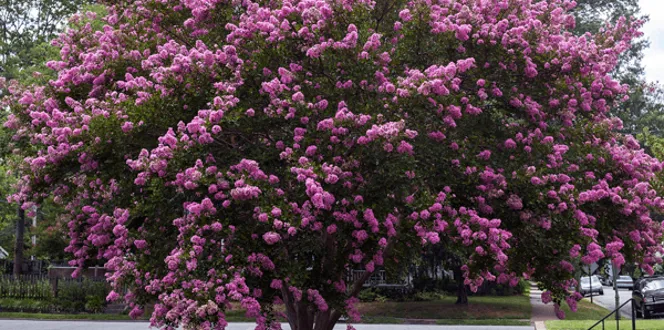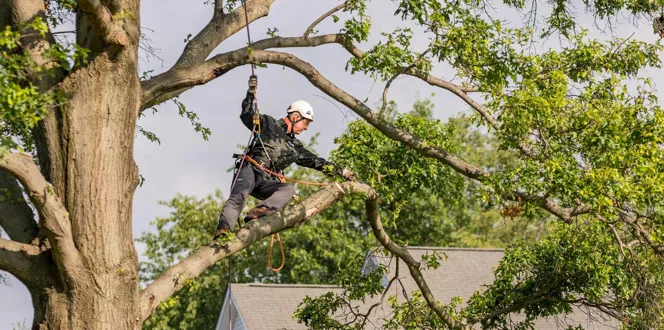Proper pruning gives a tree good structure and can stimulate vigorous growth in the right places. Once they get a healthy cut, trees can spring into a new growing season with gusto.
However, there is one infamous pruning shortcut that holds trees back from a healthy life—tree topping. When you cut the top of a tree off, you leave behind a weak tree that’s unstable and at risk of decline.
If you’ve topped your tree once and are now concerned, you can still likely fix it.
A Step-by-Step Guide to Fixing a Topped Tree
For the best chance of restoring your tree, consult with your local arborist about corrective pruning.
Will a topped tree grow back on its own?
Oh, yes–and quickly! Trees lose essential energy reserves and energy-producing leaves when topped. Due to this damaging loss, trees need to react and quickly regain what they lost. The top of your tree may soon be covered in thin, vertical branches that look like twigs, called epicormic shoots.
Epicormic shoots grow in quickly, right below the pruning cut, as trees attempt to recover. Your tree can quickly be just as tall as it was before. But now, it will have many unstable branches and an unflattering silhouette.
Luckily, you can repair and reshape a topped tree with these 5 steps.
 Before pulling out the pruning tools, you’ll need a little patience. A topped tree grows multiple shoots from each cut as it tries to restore energy production. Avoid tampering with these until they’ve had a year to become established. You want to wait until the new shoots have hardened-off for the winter before cutting any
Before pulling out the pruning tools, you’ll need a little patience. A topped tree grows multiple shoots from each cut as it tries to restore energy production. Avoid tampering with these until they’ve had a year to become established. You want to wait until the new shoots have hardened-off for the winter before cutting anyScope out the shoots for ones that can form dominant branches, called leaders. Leaders should be chosen from the tallest shoots, and be free of damage such as cracks or decay.
 Cut weak shoots down to the trunk. Leave some shorter, stronger sprouts that look like they could catch up with the new leader, but cut them back to about one-half of their current length. These stronger sprouts will branch out as new limbs on the leader. With that in mind, be sure the leader is central and stable, so it can successfully grow into a replacement branch. Eventually, save only about 1-3 shoots total from each old topping cut to have the best chance of restoring strong leaders and branches with good structure.
Cut weak shoots down to the trunk. Leave some shorter, stronger sprouts that look like they could catch up with the new leader, but cut them back to about one-half of their current length. These stronger sprouts will branch out as new limbs on the leader. With that in mind, be sure the leader is central and stable, so it can successfully grow into a replacement branch. Eventually, save only about 1-3 shoots total from each old topping cut to have the best chance of restoring strong leaders and branches with good structure. After the first restoration pruning, repeat this process every 2-3 years over the next 10 years, periodically pruning the sprouts you left behind to help train them.
And presto! With time and care, your tree should branch back into its natural form.









